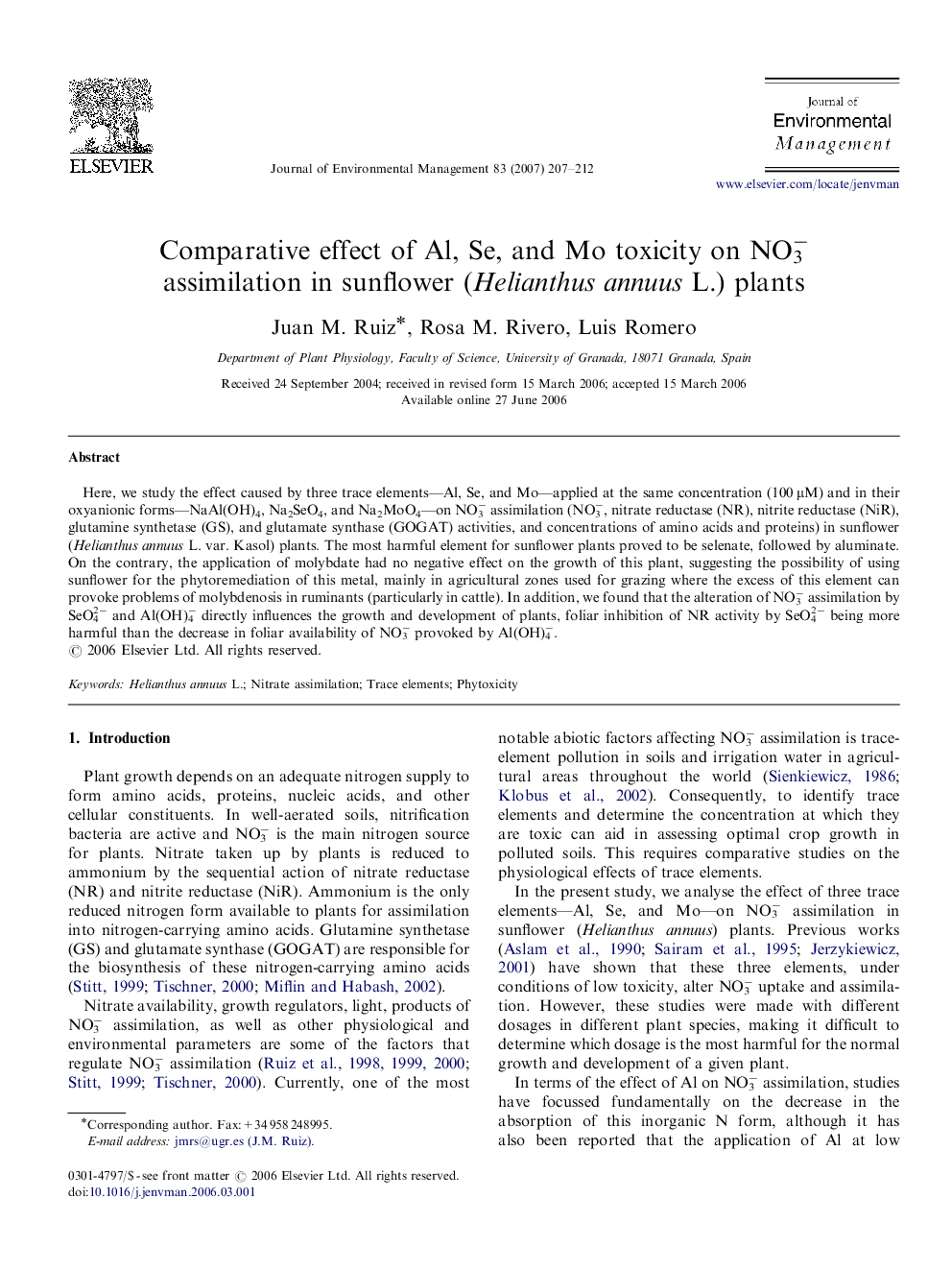| Article ID | Journal | Published Year | Pages | File Type |
|---|---|---|---|---|
| 1058770 | Journal of Environmental Management | 2007 | 6 Pages |
Here, we study the effect caused by three trace elements—Al, Se, and Mo—applied at the same concentration (100 μM) and in their oxyanionic forms—NaAl(OH)4, Na2SeO4, and Na2MoO4—on NO3− assimilation (NO3−, nitrate reductase (NR), nitrite reductase (NiR), glutamine synthetase (GS), and glutamate synthase (GOGAT) activities, and concentrations of amino acids and proteins) in sunflower (Helianthus annuus L. var. Kasol) plants. The most harmful element for sunflower plants proved to be selenate, followed by aluminate. On the contrary, the application of molybdate had no negative effect on the growth of this plant, suggesting the possibility of using sunflower for the phytoremediation of this metal, mainly in agricultural zones used for grazing where the excess of this element can provoke problems of molybdenosis in ruminants (particularly in cattle). In addition, we found that the alteration of NO3− assimilation by SeO42− and Al(OH)4− directly influences the growth and development of plants, foliar inhibition of NR activity by SeO42− being more harmful than the decrease in foliar availability of NO3− provoked by Al(OH)4−.
